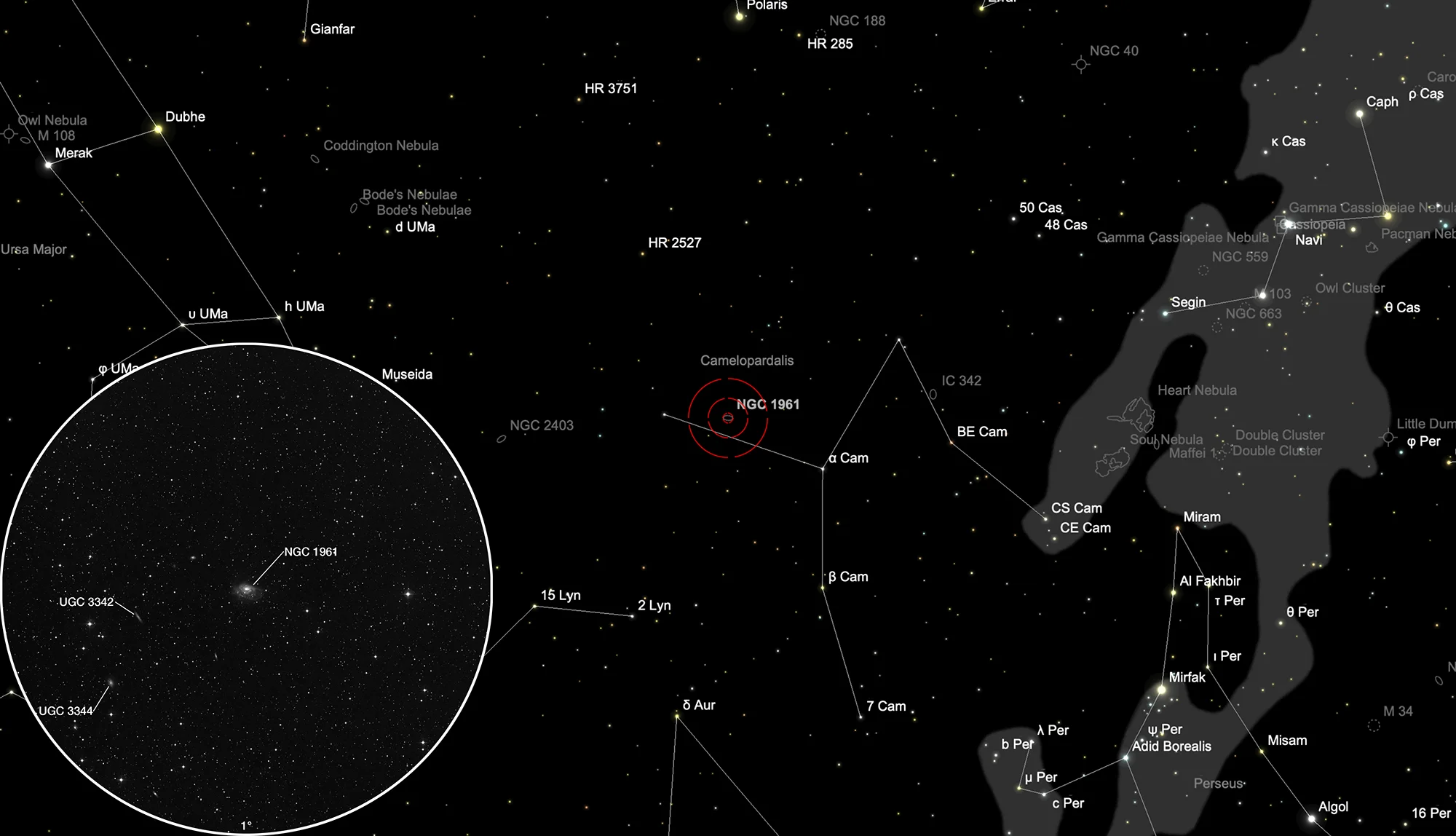Galaxy NGC 1961 (Arp 184)


History
This galaxy was discovered by William Herschel on 3 December 1788 using his 18.7 inch reflector. He cataloged it with III 747 as a «very faint nebula» and noted: «Considerably faint, pretty large, of an irregular figure, much brighter in the middle, easily resolvable, some stars visible.» [463] Dreyer added the galaxy as NGC 1961 to his New General Catalogue published in 1888. [313]
On 22 December 1891 the galaxy was discovered again by the French astronomer Guillaume Bigourdan using the 12.4 inch refractor at Paris Observatory. His observation added in 1910 by Dreyer as IC 2133 to his second «Index Catalogue», unknowingly as duplicate entry for NGC 1961. [277, 315]
In Halton Arp's «Atlas of Peculiar Galaxies» from 1966 the galaxy NGC 1961 is listed as Arp 184 as a galaxy with narrow filaments. He noted: «Two long straigt arms or filaments tangend to NE side of galaxy.» [199]
Physical Properties
NGC 1961 is an intermediate spiral galaxy with an active galactic nucleus. It shows highly disturbed and asymmetric spiral arms, which normally indicates an interaction or merger with another galaxy, but none had been found yet. The galaxy is part of a group of about 10 other smaller galaxies in a distance of around 171 million light years. The galaxy's unusual shape may be due to interaction with the gas in this cluster. Most of this galaxy is still producing young and massive stars. Given the apparent size and brightness of this galaxy it must be one of the largest galaxies in our «local universe». [642, 643]
| Designation | NGC 1961 |
| Type | Gx (SBbc) |
| Right Ascension (J2000.0) | 05h 42m 03.9s |
| Declination (J2000.0) | +69° 22' 43" |
| Diameter | 4.5 × 3.1 arcmin |
| Photographic (blue) magnitude | 11.7 mag |
| Visual magnitude | 11.0 mag |
| Surface brightness | 13.7 mag·arcmin-2 |
| Position Angle | 85° |
| Redshift (z) | 0.013122 |
| Distance derived from z | 55.43 Mpc |
| Dreyer Description | cF, pL, iF, mbM, er, * inv (? PD) |
| Identification, Remarks | WH III 747; GC 1167; IC 2133; UGC 3334; MCG 12-6-7; IRAS 05365+6921; CGCG 329-8; Arp 184 |
Finder Chart
The galaxy NGC 1961 can be found in the rather inconspicuous constellation Camelopardalis. The best time to observe is August to May, when the circumpolar constellation is highest in the sky.
